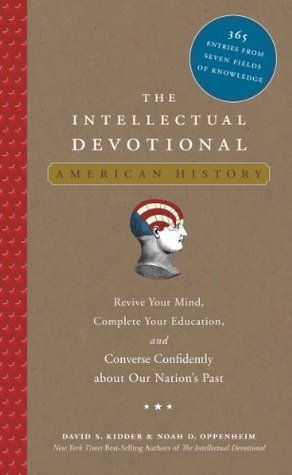More on this book
Kindle Notes & Highlights
Started reading
January 22, 2018
first native English speaker to rule Britain in fifty years.
Battle of Saratoga (1777) marked the crucial turning point of the American Revolution.
An entire British army—six generals and 5,500 men—was forced to surrender.
French government officially recognized the United States when it received the news of Saratoga, becoming the first foreign power to accept the independence of the colonies.
American hero of the battle was none other than Benedict Arnold
Benjamin Franklin (1706–1790), the American ambassador in Paris, used the victory at Saratoga to convince King Louis XVI (1754–1793) to formally recognize the United States.
immediate purpose of the Declaration of Independence, signed in Philadelphia in 1776, was to “declare the causes” that impelled the thirteen colonies to revolt against British rule.
written by the brilliant Virginia delegate Thomas Jefferson
Jefferson’s eloquent words, which were heavily influenced by the English philosopher John Locke (1632–1704), have had enormous influence on American politics and society in the two centuries since the framing of the declaration.
Lowell, Massachusetts, was founded as a planned industrial community
Lowell in its heyday produced up to one-fifth of the nation’s textiles.
workers at Lowell, hours were long, but conditions and pay often offered an appealing alternative to farm life.
Lowell owners recruited young, single women from rural New England to work at the looms.
The city lost business after the Civil War, and many of the mills became obsolete in the twentieth century.
typical workday at Lowell was from 4:50 a.m. to 7:00 p.m., with a few breaks for meals.
terms of the Treaty of Paris, the peace treaty that ended the American Revolution in 1783, Great Britain ceded to the new United States huge tracts of land west of the Appalachian Mountains.
a deliberate British policy of restricting colonial expansion in North America.
In 1787, in an effort to resolve the territorial disputes, Congress passed the Northwest Ordinance,
Instead of adding land to existing states, Congress decreed, territories in the Northwest could join as completely new states, thus avoiding an endless argument over borders and setting an important legal precedent.
law also barred slavery in the en...
This highlight has been truncated due to consecutive passage length restrictions.
In the long term, the Northwest Ordinance had an unexpected impact on the slavery debate
bane of generations of high school English students, Nathaniel Hawthorne
One of Hawthorne’s ancestors was a judge at the Salem witch trials in 1692.
After his war drawings in Harper’s made him famous, however, Homer gradually gave up commercial illustration to concentrate on the watercolor paintings that would become his lasting legacy to American art.
Homer was an artistic loner, and his distinctive style of painting does not fit easily into any category.
John Murray, also known as the fourth Earl of Dunmore (1732–1809), was the last British colonial governor of Virginia.
Henry, a constant thorn in the governor’s side, gave his famous “give me liberty or give me death” speech on March 23, 1775.
From aboard the Fowey, Lord Dunmore made a famous and highly unusual proclamation. He offered to free any American slaves who joined the British army fighting the Revolution. The offer incensed Virginia slaveholders, but it was the first large-scale emancipation offered to slaves in the South. The earl, however, never made good on his promise,
Dunmore Pineapple.
The months at Valley Forge were, in the words of Thomas Paine (1737–1809), “times that try men’s souls.” Typhoid fever and pneumonia were rampant
Alexander Hamilton
and his eventual killer, Aaron Burr
Washington’s army at Valley Forge was multiracial, including freed slaves and a handful of Oneida Indians.
Although declining in the North and regarded as a moral evil by many of the delegates, slavery was a major part of the South’s economy, and Southern representatives at the convention insisted on protecting their “peculiar institution.”
For the purposes of congressional representation, the compromise said, a slave would count as three-fifths of a person.
In the short term, the three-fifths compromise made the Constitution possible.
The three-fifths compromise was officially repealed by the Fourteenth Amendment to the Constitution, which based congressional representation on the total number of citizens in a state.
Longfellow was the first American translator of Dante’s Divine Comedy.
popularized the Democratic donkey and the Republican elephant
caricatures of Boss Tweed.
Nast depicted Tweed, the head of New York’s corrupt Tammany Hall political organization and a behind-the-scenes power broker in city politics,
Nast’s cartoons are widely credited with bringing down the Ta...
This highlight has been truncated due to consecutive passage length restrictions.
Delaware was the first state to ratify the Constitution
Having backed the losing side in the war, Arnold ended up in London, where he died debt-ridden and disgraced in 1801 at the age of sixty.
ten amendments to the document guaranteeing American citizens a long list of basic rights and liberties.
Initially, the amendments applied only to the federal government, and individual states could still restrict individual liberties if they wished.
In the early twentieth century, the income tax replaced the tariff as the biggest source of federal revenue.
three-year Lewis and Clark expedition, one of the most famous exploits in the history of American exploration, traversed thousands of miles of rugged wilderness and marked one of the first steps in the nation’s westward expansion.
partly geographical and partly political.
Jefferson wanted the two men to search for a


